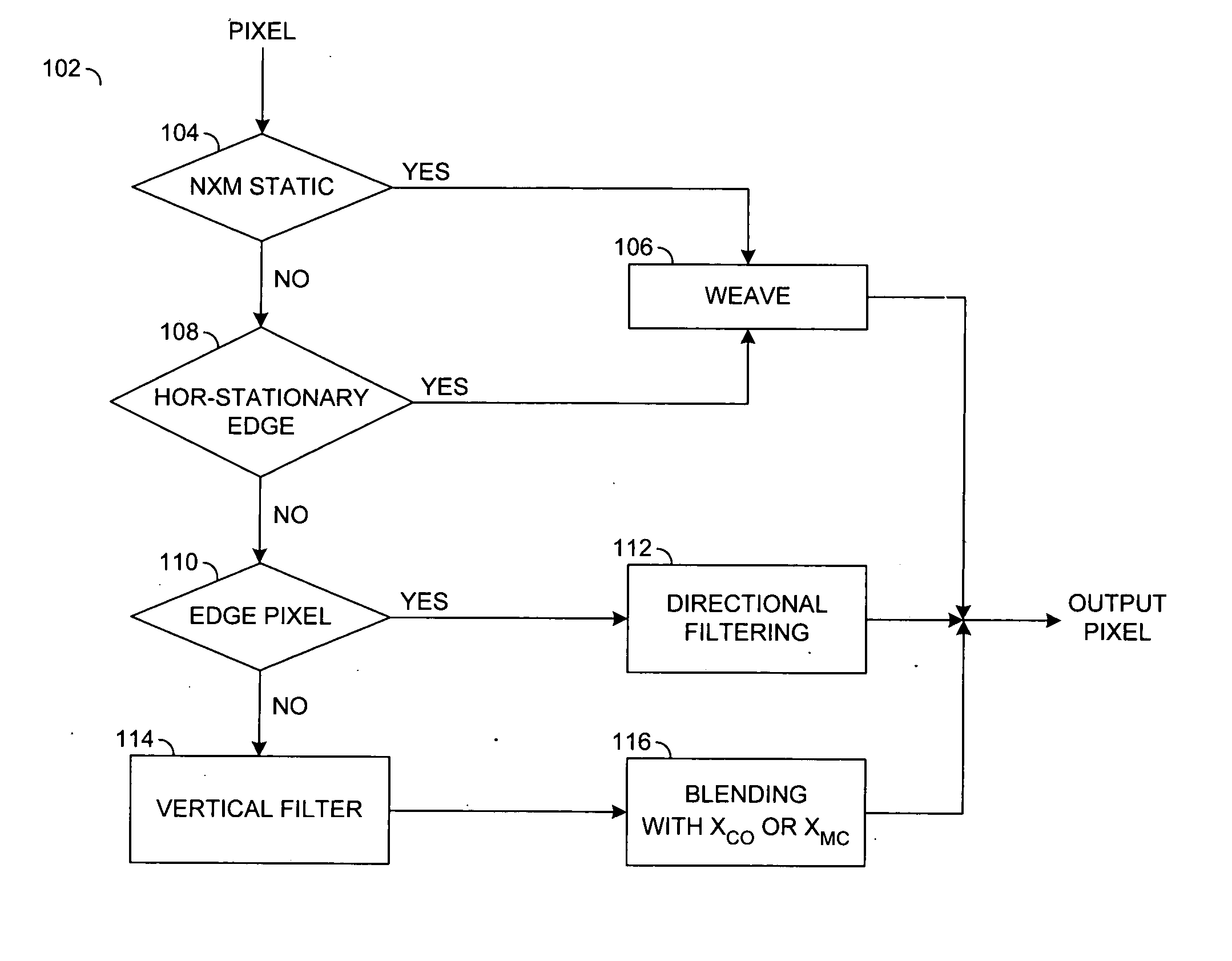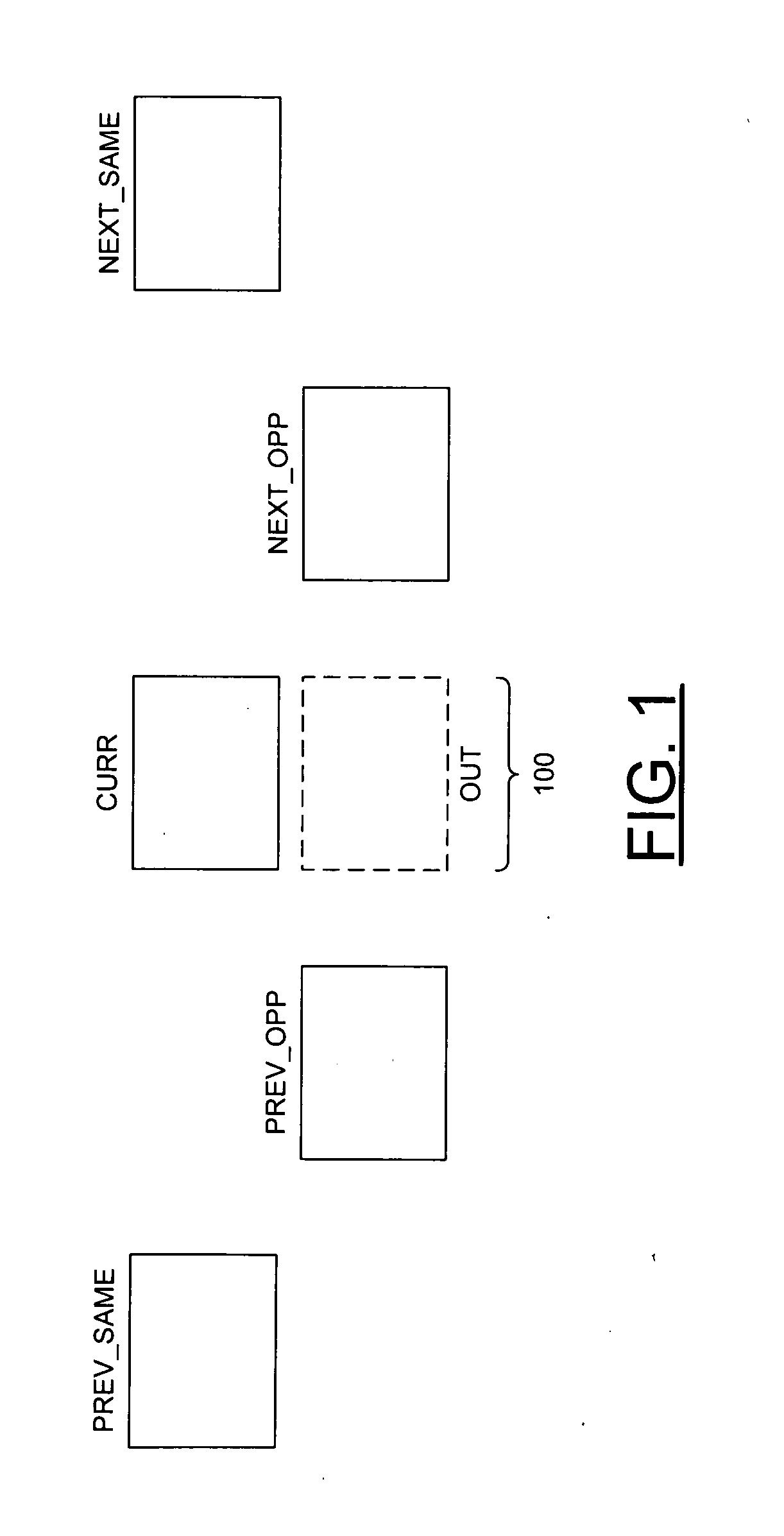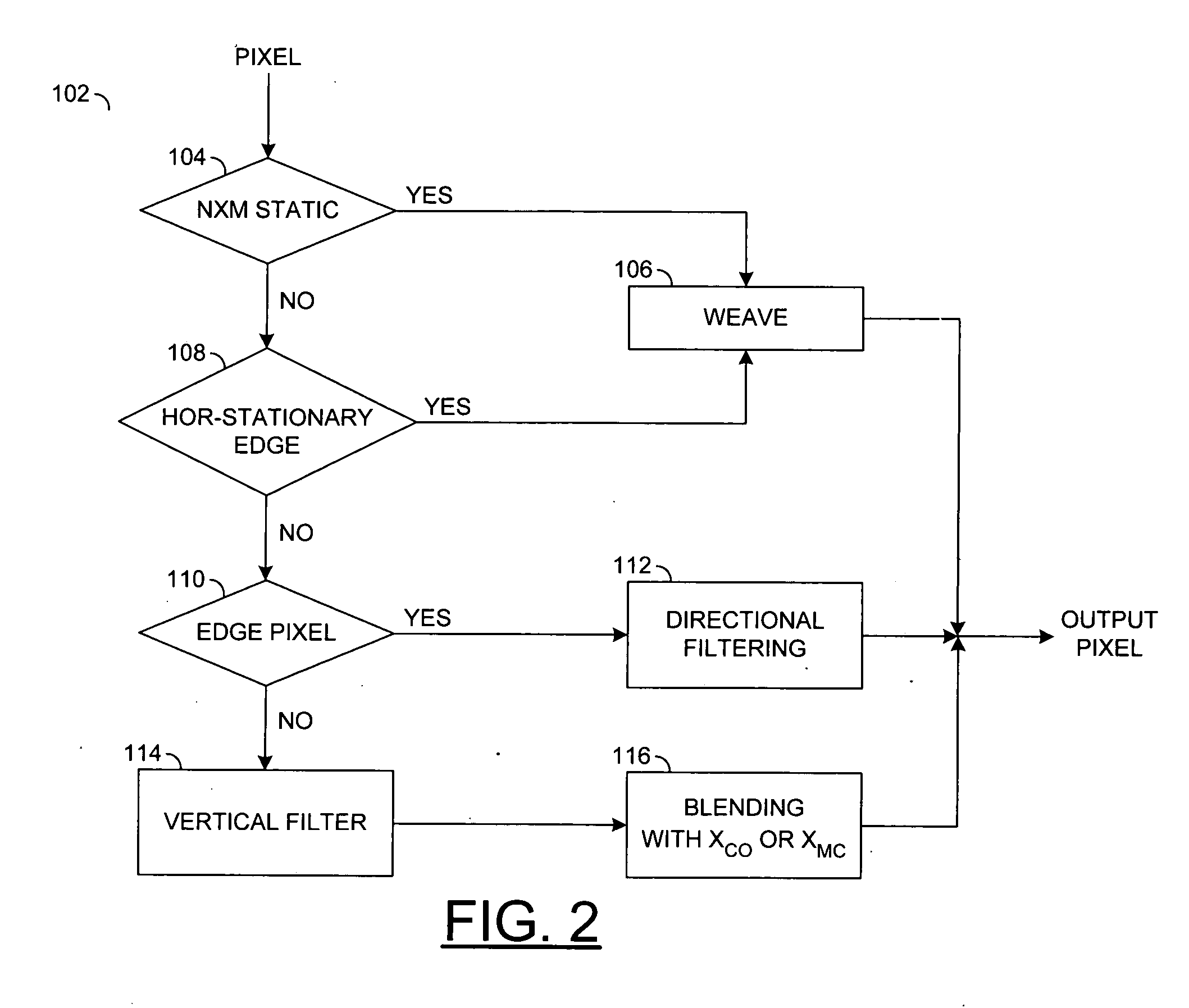Method and apparatus for video deinterlacing and format conversion
a video and format conversion technology, applied in the field of digital video formatting, can solve the problems of low-cost line-based process, known to produce “jaggies”, and particularly lack of vertical detail
- Summary
- Abstract
- Description
- Claims
- Application Information
AI Technical Summary
Benefits of technology
Problems solved by technology
Method used
Image
Examples
Embodiment Construction
[0031] The present invention may be realized as a low-cost high quality deinterlacing technique. The technique may provide spatial filtering by considering directional information at a pixel level in a field. Low cost may be realized through the following methods that may be optionally applied to reduce implementation complexity. The implementation complexity may depend on an application platform (e.g., fully custom hardware, hardware processor extension or full software implementation).
[0032] Referring to FIG. 1, a block diagram of an example field availability is shown. A frame 100 in a picture may be generated by calculating an interpolated field (e.g., OUT) interlaced with a current field (e.g., CURR) of the picture. Generation of the interpolated field OUT may be performed using one or more of (i) a first previous field (e.g., PREV_OPP) having an opposite parity (e.g., top or bottom, odd or even) as the current field CURR, (ii) a second previous field (e.g., PREV_SAME) having ...
PUM
 Login to View More
Login to View More Abstract
Description
Claims
Application Information
 Login to View More
Login to View More - R&D
- Intellectual Property
- Life Sciences
- Materials
- Tech Scout
- Unparalleled Data Quality
- Higher Quality Content
- 60% Fewer Hallucinations
Browse by: Latest US Patents, China's latest patents, Technical Efficacy Thesaurus, Application Domain, Technology Topic, Popular Technical Reports.
© 2025 PatSnap. All rights reserved.Legal|Privacy policy|Modern Slavery Act Transparency Statement|Sitemap|About US| Contact US: help@patsnap.com



